SPECIAL
안녕하세요...
저는 오래된 타임포럼 눈팅 회원입니다.
다름이 아니라 어제 한 회원님이 국제시계박물관에 다녀왔는데 제대로 구경하지 못했다는 아쉬움을 남기셔서..
숙소 근처에 피시방에서 예전에 썼던 이 글을 올려 드립니다.
이 자료는 사실 제가 2012년 8월 WOSTEP학교 실기 테스트를 보러 간 기회에 들린 라쇼드-퐁 (국제시계박물관)에 대한 사진 자료입니다.
사진만 찍은 것이 아니라 그 안에 적혀 있는 글자까지 가져오느라고.. 고생을 좀 했었습니다.
도둑 촬영분이라 이렇게 공개를 해도 되는 것인지 잘 모르겠습니다. 문제가 된다면 삭제 요청드립니다.ㅠㅠ
그리고 제가 작은 글을 올리는 카페에서 퍼 나른 것이므로..주소첨삭 해놓겠습니다.
http://cafe.naver.com/watchcollector?20130627035646
참고로 오역이 있는부분은 댓글로 알려주시면 수정하도록 하겠습니다.. 제가 부족한 부분이 많아서..ㅠ 정확한 정보를 드리지 못하는 것에 죄송스럽네요..ㅠ
그럼 긴글이지만 시계 매니아 이신분들이 보시는 만큼 흥미를 가져 가셨으면 좋겠습니다^^.
그럼이만 늦었지만, 좋은하루 되세요^^.
-------------------------------------------------------------------------------------------------------------------------------------------------------
이번 자료는 제가 스위스에 여행갔을때, 스위스 국제 시계박물관에 전시된 것을 일부분만 찍어서 꾸역꾸역..
잘 못하는 영어를 번역하면서 오랫동안... 작은-자료로 만들어 보았습니다. 그리고 번역이 완벽하지 않습니다.
![]() 저 또한 공부차원에서 시작한 것이라.. 많이 오역이 되어 있을 수 있으니 부디, 부족한 저를 이해해 주시기 바랍니다.ㅠ
저 또한 공부차원에서 시작한 것이라.. 많이 오역이 되어 있을 수 있으니 부디, 부족한 저를 이해해 주시기 바랍니다.ㅠ
원본문은 같이 올려 놓았으니 잘못된 부분이 있다면.. 답글로 달아주세요ㅠ 수정, 보완하여 좀 더 나은 자료로 만들겠습니다.
시기는 2012년 7월 말경이며, 원래 사진촬영이 금지되어있는 장소이나.. 감시원들의 눈치를 무릅쓰고 도둑이 제 발 저리듯
몰래몰래 찍어서 사진의 질이 많이 안 좋을수가 있습니다.ㅠ 양해 드리며.. 정말 조그만한 자료이니..
이런 것도 있다 생각하시면 되겠습니다.
그리고 시계를 정말 좋아하신다면, 이곳은 꼭 가보시길 추천드립니다! 강추!!!
그럼 요즘 유행한다는.. 감기 조심하세요^^
★Swiss - 라쇼드퐁에 위치한 [스위스 국제 시계 박물관] 입구입니다.
★옛날의 에나멜(Enamel) 작업을 하시던 기술자의 벤치사진입니다.
★옛날의 시계제작자의 밴치사진입니다.
★옛날에 조각가?(인그레이버)들의 벤치사진입니다.
★크게 만들어놓은 Escapement와 Regulataing Units
★여기는 앤틱(Antique)-시계들 복원하는 실입니다. 국제시계 박물관안에 있으며, 아래의 영상자료를 보시면 스위스 복원학교에
대한 영상이 있는데 그 학교랑 연계된 곳 같습니다. 영상을 보시면 요기 박물관 관장이 나오는 것을 확인할 수 있습니다.

★Tourbillon
The tourbillon mechanism, invented by Abraham-Louis Breguet at the end of the XVIIIth century.
makes it possible to eliminate rate variations due to defects of equilibrium in vertical positions.
As it must have no imprecision whatsoever, a tourbillon is particularly difficult to make and is only used in wristwatches by a few particularly gifted watchmakers and the most prestigious manufacturers.
18세기 말, Tourbillon mechanism은 Abraham-Louis Breguet가 발명했다.
Tourbillon mechanism은 수직상 위치에 밸런스(Balance)의 불안정으로 인한 오차변화를 제거하는 것을 가능하게 만든다.
투어빌론은 어떠한 부정확함도 없어야하기 때문에 투어빌론 만드는것이 상당히 어렵고 소수의 유능한 와치메이커와 가장 명성있는 브랜드들(high-end) 손목시계에 사용된다.
★Lever escapement
From about 1850, the lever escapement supplanted the cylinder escapement in high quality watches.
It consisted of a wheel, generally of steel, a lever fitted with pallets of jewels and a roller fixed on the balance staff.
1850년 경 부터, 레버 이스케이프먼트는 실린더 이스케이프먼트 대신하여 고급시계용으로 사용된다.
보통 강철인, 레버 이스케이프먼트는 팔렛주얼이 부착된 레버와 벨런스 스텝에 고정된 롤러, 휠로 구성되어 있다.
★Cylinder escapement
Being less sensitive to variations in the motive force than the verge escapement, the cylinder escapement made it possible to do without the fusee in watch construction.
It was made of a small steel tube, sometimes decorated with jewels, on which the teeth of the escapement wheel exerted pressure.
실린더 이스케이프먼트는 시계구조상에 퓨지(Fusee)없이 수행하는것이 가능하게 만들어졌다. 버지 이스케이프 보다 원-동력 변화에 덜 작용하는 것이다.
때로는 주얼로 장식되었으며, 실린더 이스케이프먼트는 작은 스틸튜브로 만들어졌고. 작은 스틸튜브로 이스케이프먼트 휠 이빨에 힘을 가했다.

Fusee
n.All watches dating from the 16th and 17th centuries have fusees. The barrel was connected to the fusee by a gut cord, which was superseded by a chain about 1660.
The invention of the fusee is attributed to Leonardo da Vinci, one of whose drawings shows the principle on which it works (c. 1540).
16세기~17세기에 모든시계는 퓨지가 있다. 배럴은 퓨지에 둥근막대 줄에의해서 연결되어져있다.
퓨지에 발견은 레오나르도 다빈치의 것으로 여겨진다. 다빈치의 도면중 하나는 퓨지가 작용하는 원리를 보여준다(c. 1540)

★Crown-wheel escapement
The crown-wheel escapement, also called verge escapement, was used in clocks and watches from the 14th century until about 1850.
It consisted of a wheel with pointed teeth, similar to a crown, which met the two pallets of the verge alternately
버지 이스케이프먼트라 불려졌던, 크라운-휠 이스케이프먼트는 14세기부터 1850년경까지 시계(Clocks)와 시계(Watches)들에 사용되어졌다.
크라운과 비슷한, 크라운-휠 이스케이프먼트는 버지의 두 개의 팔렛이 번갈아가며 만나며 뾰족한 이로 구성되어졌다

★Jewels and setting
Watch jewels, whether made by craftmen or in factories, were always the work of specialists.
Watchmakers only set them in the movements supplied by "ebauche" factories.
시계 주얼은 전문 공예가또는 공장에서 만드는것이든, 시계 주얼들은 항상 전문가들의 일 이였다.
와치메이커들은 오직 "ebauche"공장들에 의해서 공급된 무브먼트에 주얼들을 장착했다.
ébauche n.
Incomplete watch-movement.
Until about 1850, the ébauche consisted only of the bottom plate, bars, fusee and barrel. The old Genevese watchmakers called the ébauche le blanc, i. e. the blank.
In the early 19th century, the ébauche was made up of two plates with pillars and bars, the barrel, fusee, index, click and ratchet-wheel, and a few assembling-screws.
These parts were all roughly filed and milled. The steel and brass parts were manufactured in special workshops. The ébauche was finished in the finishing-shop (comptoir d'établissage).
The modern ébauche is a jewelled or non-jewelled watch-movement, without its regulating organs, mainspring, dial or hands.
미완성 시계-무브먼트
1850년경까지, 에보슈는 하단플레이트, 바, 퓨지와 배럴에만 구성되어졌다. 오래된 제네바 와치메이커들은 에보슈 르 블랑이라 부른다. 즉 빈상태.
19세기 초반에, 에보슈는 두개의 플리이트와 지주대와 바, 배럴, 퓨지, 인덱스, 클릭과 래칫휠, 몇개의 조립 스크류들로 구성되었다.
이 부품들은 모두 거진 가공 되어져있었다. 스틸과 황동은 특별한 작업장에서 제조되었다. 에보슈는 피니싱샵에서 마무리되었다.
최근의 에보슈는 레귤레이터 오간, 메인스프링, 다이얼 or 핸즈가 없이 시계무브먼트에 주얼또는 non-주얼 되어있다.

★Watchmakers' tools and machines
The manufacture, assembly and adjustment of movements required the use of many special tools, sometimes invented and made by the watchmakers themselves.
와치메이커의 공구와 기계
조립과 무브먼트 조립에 필요한 많은 특수한 도구들의 용도로, 제조업자들은 때로는 와치메이커 자신들의 스스로 고안하고 만들었다.

★Dials
In the 18th and 19th centuries, watch dials were generally enamelled.
In the early 20th century, enamel was increasingly abandoned in favour of metal dials which were easier to make and cost less
18세기와 19세기에, 시계 다이얼들은 대게 에나멜이었다.
20세기 초반에, 에나멜 만들기 쉽고 제작비용이 적은 금속 다이얼들 인기속에 점점 인기가 줄었다.

-Measuring instruments
As from the 19th century, increasingly accurate instruments made it possible to measure a tenth, hundredth and finally a thousandth of a millimetre.
Mechanical manufacturing was responsible for this accuracy, which enabled the parts making up a watch to be interchanged.
측정도구
정확한 측정도구들은 1/10, 1/100, 마지막으로 1/1000밀리미터까지 측정하는것이19세기 경부터 가능하게 되었다.
기계제조는 부품들이 교체되는 시계를 만드는 것을 가능하게하는 기계제조 정확도를 위해 책임을 지고있다.

★Hands

★Antimagnetism or non-magnectism
Magnetism has such a disturbing effect on the regulating organ that it can make it totally unusable. In 1956,
after long years of research, IWC achieved protection against magnetic influences up to 1000 oersted, whereas
100 oersted are enough to throw out hairsprings and balance wheels.
비-자성(자기)
자성(자기)은 완전히 움직일 수 없게 레귤레이터 오간에 영향을 끼쳐 불안정한 효과를 끼친다. 1956년,
연구의 오랜세월 이후에 IWC는 1000 Oe (에르스텟)에 맞먹는 자기영향에 대한 보호에 달성했다.
그런데 100Oe (에르스텟)은 헤어스프링과 밸런스휠 버리기에 충분하다.
★Lubrication
There are three types of oils:
-Fatty oils of animal origin
-Mineral oil
-Synthetic oil, used in modern watchmaking.
Spreading remains the greatest defect. A drop is deposited using an oil-pike, Perfect functioning over a long time depends on this operation.
윤활류
오일은 3가지 타입이있다:
- 동물성 오일의 지방으로 된 오일
- 광물성 오일
- 현대 와치메이킹에 사용되는 합성 오일
퍼지는것은 가장 큰 결함을 남긴다. 한번의 드롭은 오일피크 놓인 오일을 사용한 것이다. 완벽한 기능은 장기간 윤활류가 유지되는지에 달려있다.

★Watchmakers, case-makers, technicians, micro-mechanical operators and specialized research workers collaborate to make a great many improvements in watches.
Glass: a plate of glass, natural or synthetic, marries the shape of case; it can be bevelled, cheve, concave, optical or ball-shaped.
Cover: this is normally found in a hunter watch, but also on the first wristwatches in the form of a grid.
Case: a wide range of different materials are used to make cases. Precious metalsl, steel, wood, titanium, etc.
They protect the movement against external damage and it is the case, dial and hands that together produce the look desired by the owner.
Watch-resistance: gaskets and a perfectly finished case contiribute to this. The first patents for water-resistant cases go back to 1926. Rolex and Mido were pioneers in this area.
와치메이커, 케이스 메이커, 테크니션, 마이크로 기계 작업자 와 전문 연구원이 시계에 뛰어난 많은 개선을 만들기 위해 협력한다.
유리 : 유리의 판, 광물 또는 합성, 케이스에 형태로 결합; 유리는 광학 또는 구 형상, 오목한, cheve, 빗각이 가능하다.
커버 : 커버는 헌터시계에 일반적으로 찾을수 있을 뿐만아니라 그리드양식에 최초의 손목시계에서 찾을수 있다.
케이스 : 각기다른 금속의 넓은 범위는 케이스를 만는것에 사용된다. 값비싼 금속, 강철, 나무, 티타튬 등등.
그것들은 외부손상에 대한 무브먼트를 보호하고 그것은 케이스다, 다이얼과 헨즈 주인의해서 디자인된 모양으로 종합하여 만든다.
시계 방수 : 카스켓과 완벽하게 마무리된 케이스는 방수에 기여하게된다. 1926년 시계방수를 위한 첫 특허는 뒤 빽에 해당한다. 로렉스 와 Mido가 이 방수분야에서 개척자들이였다.
chevé adj.
Refers to the profile of a glass, bezel, caseband, dial, etc., with a more or less rounded edge.
더 or 적게 둥근 모서리로 유리, 베젤, 케이스밴드, 다이얼 등등 윤곽에 조화시키

★Since the beginning of the 20th century, watch users have developed pressing needs:
They want
-the time to be easy to see quickly
-their timepieces to be smaller
-a watch to reflect their personality
The manufacturers are therefore encouraged to modernize and improve watches. Mechanical movements are undergoing substantial changes, notably through a reduction in their size.
20세기 초기이래로, 시계 사용자들의 간청한 요구에 만들어졌다.
그들이 원한 것 :
- 시간을 빠르게 보기위해 쉬울 것
- 그들의 시계들은 작을 것
- 시계에 그들의 개성을 반영시킬는 것
시계 제조업체들은 따라서 현대적이고 개량한 시계를 권장했다. 기계식 무브먼트는 특히 시계들에 사이즈가 줄어듬을 통해 상당한 변화를 격고있다.

★About 150 parts, assembled in a pre-determined order, make up the movement of a mechanical watch.
These parts, of which the smallest in hardly visible to the naked eye, are made with extreme precision.
The main parts are:
*the frame, consisting of the plate, on which the bridges bearing the name of the moving parts they receive are screwed (barrel bridge, pallet bridge)
*the winding and timesetting mechanism.
The main parts of a standard model are the crown, winding stem, castle-wheel and transmission-pinion.
이미 정해진 순으로 조립된, 약 150개 부품들로 기계식 시계의 무브는 만들어진다.
육안으로 거의 볼 수없는 작은 부품들은 완벽한 정밀함으로 만들어진다.
중요한 부품들은 다음과 같다:
* 플레이트로 구성하는 프래임은 움직이는 부품의 명으로 교량으로 브릿지들을 스크류로 고정된다 (배럴 브릿지, 팔렛 브릿지)
* 와인딩과 시간셋팅 매커니즘
대표적인 모델의 중요부품은 휠과 트랜스미션 피니언, 와인딩스템, 크라운이다

★Thermic influences
Large or sudden changes in temperature cause unacceptable rate variations.
Modern discoveries of special alloys have contributed to preventing the combination of balance wheel and hairspring from being affected by this phenomenon.
A watch with a brass balance wheel and a steel hairspring will lose about 12 seconds every 24 hours if the temperature rises by a single degree.
In 1900 the timer Paul Perret fixed nickel-steel hairsprings into monometallic balance wheels. Charles-Edouard Guillaume continued this research in the laboratory and, in 1919, found an alloy that is unaffected by a wide range of temperatures: elinvar.
열이 영향
온도가 높거나 혹은 급격한 변화에는 이해하기힘든 오차변화에 원인이 됩니다.
현대 특별한 합금의 발견은 열의 영향 의해 끼치는 것으로 부터 밸런스휠과 헤어스프링의 결합을 예방하는 것에 기여 하고있다.
황동 벨런스 휠과 스틸 헤어스프링으로 구성된 시계는 만약 하나의 온도에 의해서 온도가 상승한다면 약 매 24시간 마다 12초씩 오차가 줄어들게 됩니다.
1900년경 타이머 폴 페레는 단일화한 밸런스 휠에 니켈 - 스틸 헤어스프링을 고정했다. 샤를 E. 기욤은 실험실에서 이 연구를 계속 했었고, 1919년에 온도의 다양한 영향을 받지않는 합금을 발견했다 : Guillaume elinvar (밸러스의 제조에 적합한 합금)
★Shock-resistant
Wristwatches, which are more exposed to shocks, require special protection against the breakage of staffs and pivots.
Only five patents were taken out between 1888 and 1922. From 1927 onwards, several companies took out patents for shock-resistant devices:
for example, Erismann-Schinz, Mido and the Ebauches factories in Grenchen and Fontainemelon. In July 1929, lection patented a device with an elastic bearing to protect the pivots against shocks.
Other systems were developed after 1930, such as the "Shock-Resist", "Incabloc" by Porte-Echappement Universel SA and the "Kif-Flector" by Parechoc SA
충격에 노출된 손목시계들은 밸런스 스텝과 피봇들의 파손에 대한 특수한 보호책이 필요로 한다.
오직 5개의 특허로 1888년에서 1922년사이에 취해졌다. 1927년 이후부터 여러 회사들은 충격 흡수 장치들을 위한 특허를 취했다:
예로, Erismann-Schinz , Mido 와 그렌첸과 폰텐메론에 에보슈 공장 1929년 7월, 충격으로부터 피봇들을 보호하기위해 탄성을 지닌 베어링으로함에 따라 특징적인 장치를 선정.
다른 시스템들 1930년 이후에 Porte-Echappement Universel SA의해서 "Shock-Resist", "Incabloc" 와 Parechoc SA의해서 "Kif-Flector" 개발되었다
★Stainless
Rust, like magnetization, has a disastrous effect on the accuracy of a watch.
Elementary preventive measures, such as avoiding touching with the fingers, or breathing on a part that is being worked on, have to be taken, but they are not enough.
The discovery of a variety of special steels, known as stainless, has done much to reduce the effect of this problem.
자성과 같은 녹은 시계의 정밀도에 끔직한 영향을 끼친다.
손가락으로 만지는 것이나 작업중인 부품에 숨을 내쉬는 것을 피해야 하는 것과 같은 기본예방책이 취해져야 하지만 그 예방책들은 충분하게 되지 않았습니다.
스테인레스로 알려진 특수한 강철 종류의 발견은 위에와 같은 문제를 줄이기위해 많은 일을 했습니다.

★The rectifiers
These devices for automatic mechanical watches, are placed between the rotor and the mainspring.
They have this name because they rectify and transform the energy produced by the rotation of the rotor in both directions,
so that the spring is always wound in the right direction.
The rectifiers (한쪽 방향으로만 동력을 전달 하는 부품)
기계식 시계들에 이 장치들은 로터와 메인스프링 사이에 장착되어있다.
The rectifiers은 양방향 로터의 회전방향에 의해서 한방향으로 바로잡고 동력원을 변화시키기 때문에 이 명칭을 나타낸다. 그래서 rectifier 스피링은 항상 한쪽방향으로 회전된다.

★Automatic Watch
From 1920 until the end of the 1970s, many different experiments led to the results now known. Four more or less successful versions provided the solution:
* A watch whose movement and case go to and fro (Wig-Wag)
* A watch with a movement that moves in its case (Rolls)
* A weight with limited travel
* An oscillating weight pivoting at its centre, without banking (Rotor)
자동시계
1920부터 1970년 말까지, 여러가지 실험들이 현재 알려진 결과를 이끌어 냈다. 4가지 방법 보다 더 많거나 적은 성공적인 개량들은 해결책을 제공 :
* 무브먼트와 케이스가 좌우로 움직이는 시계
*자동시계의 케이스 안에서 움직이는 무브먼트와 시계(Rolls)
*제한된 이동거리의 추
*자동시계의 중심에 고정하여 진동하는 추, 뱅킹 없이 (Rotor)

★The escapement consists of all the organs which maintain the oscillations of the regulator.
20th century mechanical watches have a cylinder, pin-pallet, detent or lever escapement. The last type is the one mainly used, due to its better performance.
이스케이프먼트는 레귤레이터의 진동을 유지시키는 모든 구조들로 구성되어있다.
20세기 기계식시계는 멈춤쇠 or 레버이스케이프먼트, 핀 팔렛, 실린더가 있다. 마지막 타입은 더 나은 성능때문에 주로 사용되는 한가지 입니다
The regulator
Combining a balance wheel and hairspring, this plays a vital role as regards accuracy.
The balance wheel has been improved in stages. In 1930, the bimetallic compensation balance wheel gave way to a monometallic "flywheel" following the discovery of self-compensating hairsprings.
Since 1960, still monometallic, its felloe has not had a regulating screw. The appearance in 1935 of the Glucydur balance wheel, made of hardened beryllium bronze, marked the beginning of a new era.
The hairspring developed more or less in parallel. It benefited from the observations and intense efforts of specialists such as Reinhard Straumann. In 1933, the Nivarox hairspring was widely adopted.
The regulator
밸런스 휠과 헤어스프링을 결합한 것, 레귤레이터는 정밀도와 같은 중요한 역활을 담당하고 있습니다.
밸런스 휠은 단계적으로 개선되어졌다. 1930년, the bimetallic로 보정한 밸런스 휠은 자가보정 헤어스프링 발견에 따라 "flywheel"에 한가지 금속만을 사용하는 방법을 주었다.
1960년 부터, 여전히 단일금속의 휠에는 조정하는 스크류를 만들지 않았다. 강화된 베릴륨과 청동으로 만들어진 the Glucydur 밸런스 휠의 1935년 모습은 새로운 시대에 시작로 주목받았다.
헤어스프링은 같은방법으로 더 많거나 적게 개발했다. 헤어스프링은 Reinhard Straumann와 같은 전문가의 관찰과 열성적인 노력으로 해택을 받았다. 1933년 The Nivarox 헤어스프링은 널리 사용되었다.

★Swiss Official Chronometer Testing Office (COSC)
Created in September 1973, the Swiss Official Chronometer Testing Offuce (COSC), whose headquarters are in La Chaux-de-Fonds, today garantees the Swiss watch industry's precision.
It is this office which grants the quality label certifying that a watch, whose precision has been rigorously verified in one of its official testing offices (Le Locle, Bienne and Geneva), has the right to the increasingly sought-after appellation of chronometer.
스위스 공식 크로노미터 테스트 사무소(COSC)
스위스 공식 크로노미터 테스트 사무소(COSC)는 스위스 라쇼드퐁 지역에 본사를 1973년 9월 창립했다. 오늘날 스위스 시계 제조의 정확한 보증회사.
COSC는 시계에 품질 라벨 증명을 부여하는 사무소 이다. 시계의 정확성은 공식적인 테스트 사무소 중 한 곳에서 엄격히 검증된다.( Le Locle, Bienne and Geneva) 크로노미터의 명칭을 더욱더 추구하기에 그것을 받는다
★Institute for official quality control in the Swiss watch industry (CTM)
Set up in 1962, this official body, which operated under the supervision of the Confederation, was designed to maintain the reputation of the Swiss watch industry by identifying watches that did not satisfy the minimum quality requirements and preventing them from being sold in Switzerland and abroad. Quality testing was carried out by taking representative samples, usually at customs posts, from shipments for export.
The CTM was brought to an end by decree on 31 December 1991.
스위스 시계 산업 공식적인 품질 관리 연구소 (CTM)
1962년 설치 되었다. 연맹의 관리하에 운영이 된 CTM 의 공식적인 형태는 검증된 시계들에 의해서 스위스 시계 산업의 명성을 유지하기 위해 고안되었다. CTM은 스위스와 해외에 판매되는 것으로부터 최소한의 품질 조건과 예방에 만족하지 않았다. 보통 세관에서 품질 테스트는 수출 선적에서 대표로 샘플을 채취하여 이행되었다. CTM은 1991년 12월 31일에 법령에 의해 사라지게 되었다.

★Observatory tests
These have existed since the 19th century and give the manufacturers the opporunity to test their high precision mechanical watches. If the results meet the standards required, these watches receive a rating-certificate testifying to their status as an observatory chronometer. Furthermore, the comparison between high precision chronometers from different manufacturers creates healthy rivalry.
Observatory tests
Observatory tests는 19세기부터 있었고 제조업자에 고 정밀도 기계식 시계를 테스트하기위해 기회를 준다.
결과가 필수의 표준에 맞는다면, 그 시계들은 observatory chronometer 와 같은 그들의 평가로 증명을 평가- 인증서로 받는다. 더군다나, 서로 다른 제조업자들의 고 정밀 크로노 미터들 사이에 대조는 유익한 경쟁을 유발합니다.
★Observatory contests and testing of precision
In order to promote competition between precision timers, the watchmaking cantons called on the Observatory of Geneva and Neuchatel to organize chronometric contests. These made it possible to substantially improve the quality of the regulating organ and the prcision of watches; they were very much in vogue until the arrival of electronic watches.
Observatory 경합 과 정확한 테스트.
정확한 시계 사이에 경쟁을 장려하기 위해, 스위스 Watchmaking 지역들은 제네바의 Observatory 과 크로노미터의 경합을 설립한 뉴사텔로 요청했다. atory 경합 과 정확한 테스트들은 레귤레이터 구조의 품질과 시계의 정확성을 실질적으로 향상을 가능하게 만들었다. 그것들은 전자시계가 도래하기전에 까지 매우 많은 인기가 있었다.

★The second half of the 20th century has been marked by profound changes which transformed the traditional mechanical movement:
1952-1954 electric, and then electronic maintenance of the oscillations of the sprung-balance
1953-1960 application of the tuning fork
From 1967 introduction of the quartz resonator
While appearing to differ considerably, most electric and electronic watches have systems comprising four simple functional elements:
* An energy source which gives the watch its operating autonomy by powering all the elements in its system
(battery, accumulator)
* A generator of intervals of time which divides time into constantly equal fractions, the resonator in the system
(sprung-balance, tunung fork, quartz)
* An organ which can count and add up all these fractions (gear-train, electronic circuit).
* An indicator which displays the result of this addition (dial and hands or other display device).
20세기 후반은 전통적인 기계식 무브먼트를 변형시킨 엄청난 변화로 인식되었다.
1952 - 1954 전기, 외에도 sprung-밸런스의 진동 전자로 유지
1953-1960 터닝 포크의 적용
1967부터 쿼츠 진동자에 도입
상당히 다른것인 듯한 경우, 대부분의 전기와 전자 시계들은 네가지의 간단한 기능의 요소를 포함한 시스템을 가지고있다:
* 에너지 원 시스템 안에 모든부품이 가동하여 스스로 움직일수 있는 힘을 시계에 제공한다.(배터리, 축전기)
* 시간차 사이에 음향발생기는 늘 동등한 간격으로 시간을 구분한다.(sprung-밸런스, 터닝 포크, 쿼츠)
* Organ은 모든 Organ에 일부분을 세고 합산할 수 있다. (기어-트레인, 전자회로)
* 인디케이터는 인디케이터 부가에 결과를 보여준다.(다이얼과 헨즈 or 다른 디스플레이 장치).

★1880 discovery of piezo-electricity by the Curie brothers
1948 invention of the transistor by Bardeen, Brattain and Shockley (USA)
1960 invention of the integrated circuit on silicon, by Kilby (USA)
1967 first quartz watches submitted to the Neuchatel Observatory by the CEH (Electronic Watch Centre)and Seiko
1969 international seminar on chronometry in Paris:
* Beta 21 quarz watch, developed by the CEH
* Longines Ultra-Quartz watch
* Omega Megaquartz watch
1970 first entirely electronic wristwatch (Hamilton-Pulsar)
1971 launch of first low-consumption watch circuits
1971 first liquid crystal wristwatch (Seiko)
1972 first ladies quartz watch (Ebauches SA and Lip)
1880년 - 퀴리 형제에 의해서 압전기 발견.
1948년 Bardeen, Brattain and Shockley (USA)의해 트랜지스터 발명
1960년 Kilby에 의해서 실리콘 직접회로 발명
1967년 첫번째 쿼츠 시계는 CHE (Electronic Watch Centre)와 세이코에 의해서 뉴샤텔 검사소에 제출했다.
1969년 파리에서 크로노미터의 국제 세미나:
* 베타 21 쿼츠 시계는 CEH에서 개발되었다.
* 론진 - 울트라 쿼츠 시계
* 오메가 - 메가쿼츠 시계
1970년 첫번째 완전한 전자 손목시계 (헤밀턴 - 펄서)
1971년 첫번째 적은 소비전류의 시계 서킷을 창안
1971년 첫번째 액정 손목시계 (Seiko)
1972년 첫번재 여성용 쿼스 시계 (Ebauches SA and Lip)

★Batteries
Generating current by transforming chemical energy, the electric battery has been well known since the work of Galvani and Volta (circa 1800).
The batteries used in watches are small. The two electrochemical elements of which they are made are of several types: silver zinc-oxide or dioxide, mercury zine-oxide, or lithium which give the watch an autonomy of 5-10 years.
A watch consumes very little energy: 0.5 and 1.5A for a tension of about 1.5 V. As a comparison, the energy used to heat 200 litres of water to 25 would be sufficient to keep 200,000 watches runnung for two years.
배터리
화학적인 에너지를 전환시켜 전류를 발생시킨 것, 전지는 (약 1800년대) Galvani와 Volta 의 연구로 잘 알려졌다.
시계에 사용되는 배터리는 작다. 배터리들은 두개의 전기적인 성분으로 여러 타입을 만들었다 :
은 아연-산화물 or 이산화물, 수은 아연-산화물 or 리튬은 시계에 5~10년의 에너지를 제공한다.
시계는 매우 적은 에너지를 소모한다 :약 1.5V(전압)에 한번움직으로 0.5 ~ 1.5A 비유하자면, 에너지는 200리터의 물을 25도에서 가열하는데 사용되는 에너지다. 그것은 2년동안 움직이는 20만개 시계를 유지하기에 충분하다.
★THE PHOTO-ELECTRIC CELL
When natural or artificial light, of an intensity of about 200 lux, falls upon a photo-electric cell, it causes it to produce sufficient energy to sustain the charge of a small accumulator, and so operating a quartz-crystal clock or watch
THE PHOTO-ELECTRIC CELL
약 200룩스의 강도로 자연 or 인공적인 빛이 photo-electric cell에 들어올때, 이것은 작은 축전기의 충전을 유지하기에 충분한 에너지를 생산하는데 제공한다. 쿼츠 수정 벽시계 or 시계운영 등등

★The sprung-balance, (frequency 5 - 8 Hertz), used in all watches since it was invented by Christain Huygens in 1675, was the basis of time of the first electric and then electronic watches. Mechanical contacts were added to it to control the circuits of the electromagnetic and eletrodynamic maintenance systems.
1675년경 크리스찬 호이겐스에 의해서 발명 되어진 이래로 모든 시계들에 사용된 ( 진동수 5 - 8 Hertz) sprung-밸런스는 첫 전기와 전자식 시계들에 기본토대가 되었다. 기계적인 접촉은 전자식과 전기식 유지 시스템들중 서킷들 통제부에 sprung-밸런스가 추가되었다
★The tuning fork makes it possible to reach much higher frequencies (300 - 1'000 Hertz) than a mechanical oscillator, resulting in an improvement of the accuracy of the watch. The first tuning fork resonator was used in 1866 in a clock,. Its application to a watch was made possible by the invention of the transistor. The Swiss engineer Max Hetzel made the first tuning fork watch, for the Bulova Watch Company. Many other acoustic resonators have been conceived since then.
시계의 정확성 진보를 가져온, 터닝포크는 기계식 진동수 보다 매우 높은 진동수 (300 - 1'000 Hertz) 도달하게 하는것을 가능하게 만든다. 첫번째 터닝포크 공명기는 1866년시계(Clock)에 사용 되었다. 시계에 터닝포크 공명기의 응용은 트랜지스터의 개발으로 가능하게 만들어졌다. 스위스 기술자 Max Hetzel는 Bulova 시계회사에서 첫번째로 터닝포크 시계 만들었다. 많은 다른 음향 공명기들은 그 무렵 이후로 생각하게 되었다.

★A quatz resonator can be a bar, disk, blade, tuning fork or jens of precise dimensions and treated in accordance with very special orientations in the crystal to obtain the frequencies required and optimal thermoelastic properties.
When cut and polished, these elements are then metallized on several of their faces to enable their piezo-electric properties to be exploited. Whether suspended or inset and subjected to an alternating current, a system of this kind can vibrate, normally 32'768 times per second. These resonators are generally encapsulated under vacuum or in a neutral atmosphere.
쿼츠 공명기는 바, 디스크, 블레이드, 터닝포크 or 특정한 크기의 인이 될 수 있다. 그리고 필요한 주파수들과 최적의 탄력성을 얻기위해 크리스탈 안속에 매우 특별한 적응과 조화를 다뤄질 수 있다. 잘라내고 연마되었을 때, 이것들의 부품들은 그들의 압전의 특성을 활용 되어지는 것을 가능하게 하기위해 그들의 표면 곳곳에 금속을 입힌다. 매달거나 끼워 놓은 것과 교류로 만들어진 이런 종류의 시스템은 보통 초당 32'768 진동한다. 이것들 공명기들은 진공 or 본연 대기 속에 일반적으로 캡슐화되어있다.
★The quartz is kept vibrating by a special eletronic circuit contained in the microcircuit of the watch. This circuit is the brain of the quartz watch. It controls the oscillations of the resonator (32'768 per second) and divides them down to 1 - 2 impulses per second. These impulses are transmitted to the stepping motor. Due to their miniaturization, low consumption and ability to function at a low tension, these integrated circuits have been one of the key components in the development of electronic watches.
쿼츠는 시계 마이크로회로에 안에 장착된 특수한 전자 회로에 의해 진동하며 보관된다. 서킷은 쿼츠시계에 두뇌다. 이것은 공명기의 진동(초당 32'768)을 다루고 초당 1 - 2 펄스에 이르기까지 구분한다. 이 신호는 스태핑모터로 전송된다. 전자시계의 소형화 때문에, 적은 소비전류와 작은 진동에 작용으로 가능한 쿼츠에 직접회로는 전자 시계의 발달에 중요한 구성요소의 하나가 되었다.

★In watches using hands to display the time, the motor converts the electrical energy into mechanical energy and, via a demultiplying gear train, drives the hands of the watch. Most of the quartz watches with hands made today are fitted with Lavet-type electromagnetic stepping motors.
시간을 나타내는 핸즈를 사용한 시계안에서, 모터는 기계적인 에너지로 전기적인 힘을 전환시키고 디멀티플래싱 기어 트레인 을 통해서 시계의 핸즈를 움직인다. 오늘날 대부분의 핸즈가 구성되있는 쿼츠시계들은 Lavet-형태의 전자식 스태핑모터를 장착했다.
★Electronic watches have two kinds of display:
* a traditional, so called analog display with hands moving in front of a dial
* a digital display making use of optoelectronic phenomena. The active system used light emitting diodes(LED), which were abandoned, because of their excessive consumption, and replaced by liquid crystals(LED)
전자 시계는 시간표시의 두가지 방법이 있다.
* 전통적인, 다이얼의 앞에 움직여지는 핸즈와 알려진 아날로그 시간표시 방법으로 알려진 것
* 디지털 시간표시는 광전자 현상을 이용. 능동적인 시스템인 액정의 지나친 소비전류 때문에 액정을 대신하여 자유 분망한 빛을 내뿜는 다이오드를(LED) 사용했다.
댓글 25
-
우히히
2013.06.28 12:41
-
사진 수정 완료되었습니다.
-
와우~~잘 봤습니다!!!
-
빛의연금술
2013.06.28 14:43
정말 감사합니다!! 제가 눈뜨고도 못읽고 있던 것들이 이런 내용이였었네요, 정말 감사합니다! -
Austin_316
2013.06.28 15:42
멋진 게시물 잘 보고 갑니다. 이런 글엔 추천을 해야 마땅하겠지요. :)
-
방대한 분량의 훌륭한 자료!!!
잘 보겠습니다~ 추천 +_+
-
sublime
2013.06.28 16:41
정독후...추천드립니다.
-
경일랑
2013.06.28 17:40
좋은글 감사합니다
-
lejoja
2013.06.28 20:08
헐...대박 포스팅이네요!! 추천!
-
오... 정말 좋은 자료네요. 추천드립니다.
사진을 보니 역시 방문하기 전에 공부가 확실히 필요하다고 느껴집니다. 유리관안에 있는 공구 및 장비들이 대충이라도 뭐하는건지도 모르고 갔다간 그냥 쇠떵이들 보고 오게 되기 쉽상이겠네요... 시계나 무브먼트도 구동방식과 시대별 스타일도 미리 공부하고 가야 하겠구요.
사진과 책으로 공부한후 박물관에 가서 실제로 보고 느끼는 과정이 필요하겠네요. 한두푼들여 방문하는게 아니니까요.
좋은 포스팅 감사합니다~~~
-
yeshim
2013.06.29 10:06
좋은 자료네요................^^
-
잘받습니다~^^
-
몰래찍으신 사진이 수준급입니다.
제대로 찍으시면 대단하시겠네요.
포스팅 감사합니다.
잘 봤습니다.
-
잘 봤습니다.
-
타임포럼
2013.09.06 10:09
이 글은 Wostep 이야기는 아니지만 권오현 님의 탐방기로 회원 여러분이 보시면 좋을 듯해서 함께 옮겼습니다.
-
너무 잘 봤습니다....좋은 공부 하고 가네요!!! ^^
-
흐아민구
2013.09.06 14:02
와~ 엄청난 자료 입니다.
잘 봤습니다~!!!
-
댄디
2013.10.01 09:50
저도 얼마전 스위스에 라쇼드퐁에 들러 국제시계박물관에 들렀는데
그때 생각이 나네요 하지만 전 영어를 몰라 그냥 눈으로만 보고 온게 너무 아쉬웠어요
-
샤프남
2013.11.09 21:15
잘보고갑니다~
-
nick2
2013.12.05 17:53
몰래 찍으신 사진 치고는 사진 품질이 좋습니다. ^^
-
한빵
2013.12.14 13:30
시계 역사를 아는데 도움이 되었습니다.
박물관 구경 잘하고 갑니다.
-
motorphile
2014.02.19 03:19
저두 작년 여름 유럽여행때 들렀던 경험이 있는데
정오를 알리는 대포모양의 시계가 아직도 기억에 남네요 그 기발함이란....
-
ptmj
2014.06.17 12:42
이런곳을 다니시면서 꿈을 키우시겠네요! 화이팅!!
-
와 ..정말 공부 많이하 고갑니다^^ 감사합니다.


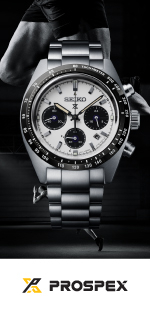
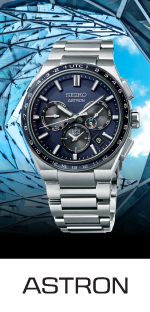
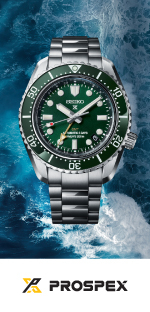
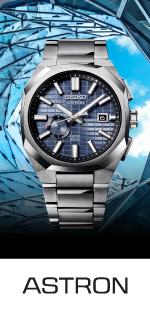
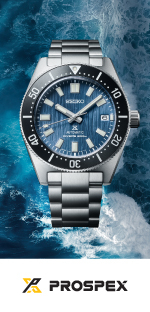
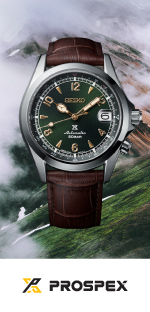
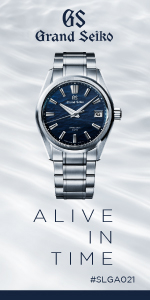




















엇... 사진이 안 보입니다...저만 그런 것인지...